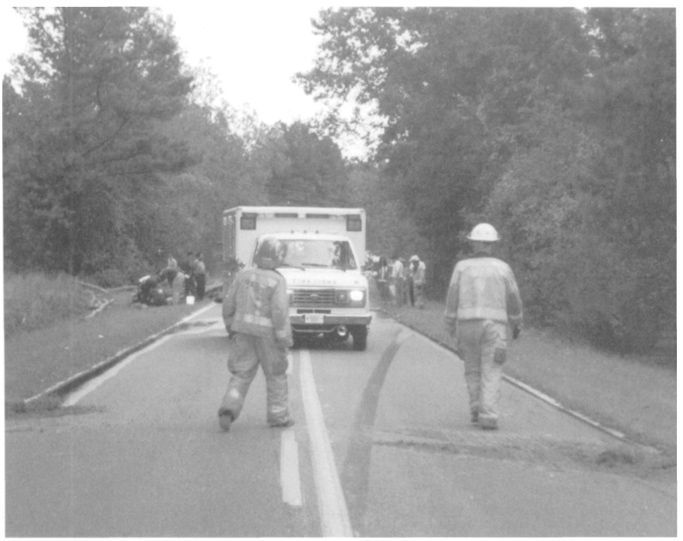I could not have generated the information, collected the photographs, or completed the project without the assistance and aid of others. I want to thank all of those who contributed to the successful completion of this book. My first debt is, of course, to my three amazing children who encouraged me to discover my writing purpose and pursue it with intense passion and perseverance. I am grateful that they understood the world must know this story. I am deeply grateful to my friend Mohsin Ali, former diplomatic editor for Reuters, who helped tremendously by serving as a guest lecturer to my college classes while I attended the many meetings. The hundreds of college students who participated in the research and surveys helped to get this book written. Unfortunately, some of these students perished in motor vehicle crashes. Many others were involved in crashes that caused them pain and injury. It was common to hear tragic stories on a daily basis. I constantly thank my college students and remind them that their involvement was important. What is written is never forgotten. I tell them that we learn more from our mistakes than from our successes. Hopefully, in this second century of motor vehicle travel, these students can experience the freedom to travel safely. I received much support and advice, and sometimes the best advice came from the naysayers who told me I was wasting my time. Fortunately, I turned all their negatives into positives. Many individuals are mentioned within, but this book is solely my project and all of the opinions expressed here (except for the direct quotations) are my own. I do not speak or write for the automakers, government safety establishment, standards development organizations, or advocates—but I do include their own works in my book and also what others have commented about them. I do not bash any group for all are important and I am very careful to be factual. I express my grateful appreciation to those who gave permission to use news articles and extended quotations such as the National Academies of Sciences / Transportation Research Board (TRB), the New York Times, Automotive News and EE Times, the World Health Organization (WHO) and the World Bank. Robert Kern, my literary agent in Chapel Hill, North Carolina and Cathy Faduska, my senior editor at IEEE Press / John Wiley & Sons, Inc. and Kay Ethier of Bright Path Solutions, Durham, North Carolina, helped craft the initial structure of my manuscript and greatly improved the book. The entire point of an editor is to decide what is and what is not fit to print, and any book will have some selection criteria. Those criteria and the editor's judgment are its bias. The best that any author can do is make it as clear as possible why everything should be included so as to avoid "unbiased" reporting where no one can be portrayed as being wrong or opposing safety. No courage is required to publish a sanitized, non-critical version of events. To do otherwise requires a higher standard. Vehicle and highway safety cannot be accomplished through the efforts of one person, a group, or a government agency. It is a shared responsibility among people who travel, the companies that provide transport, and the agencies that regulate travel. But, one person can make a difference toward the goal of safe travel. Someday, when we are "actually all safer" while traveling in crash-proof vehicles on intelligent highways, I want to tell my children's children that I knew about this problem and did my best to erase it when I could. I will tell them in life we have two choices, try or do nothing. To me it was impossible to witness the terrible pain and suffering and not get involved. Road safety is no accident. Silence is the ultimate weapon of power in vehicle and highway safety. This book will break that silence. |
Chapter 6 - Blowin' the Horn: January 2003
Highway safety affects us all. Roadtraffic injury prevention is a highly politicized issue. Most people have their opinions on what could make the roads safer. Ancedotal information and its reporting by the media all too often allow issues to be understood as major traffic safety problems requiring priority action, which in turn puts pressure on policymakers to respond. Policy decisions for effective road injury prevention need to be based on data and objective information, not on anecdotal evidence. First, data on the incidence and types of crashes are needed. After that, a detailed understanding of the circumstances that lead to crashes is required to guide public safety policy. Furthermore, knowledge of how injuries are caused and what type they are is a valuable instrument for identifying interventions and monitoring the effectiveness of interventions. - World Report on Road Traffic Injury Prevention, 2004 On January 7, 2003, the School Bus Manufacturer's Technical Council (SBMTC) commented to NHTSA: DOCKET # NHTSA-2002-13546-16 01/07/03 School Bus Manufacturers Technical Council (SCMTC)1
|
 One of the great pleasures of finishing a book is that it gives the author the opportunity to thank those who helped make the project a product.
One of the great pleasures of finishing a book is that it gives the author the opportunity to thank those who helped make the project a product. TABLE OF CONTENTS
TABLE OF CONTENTS 






